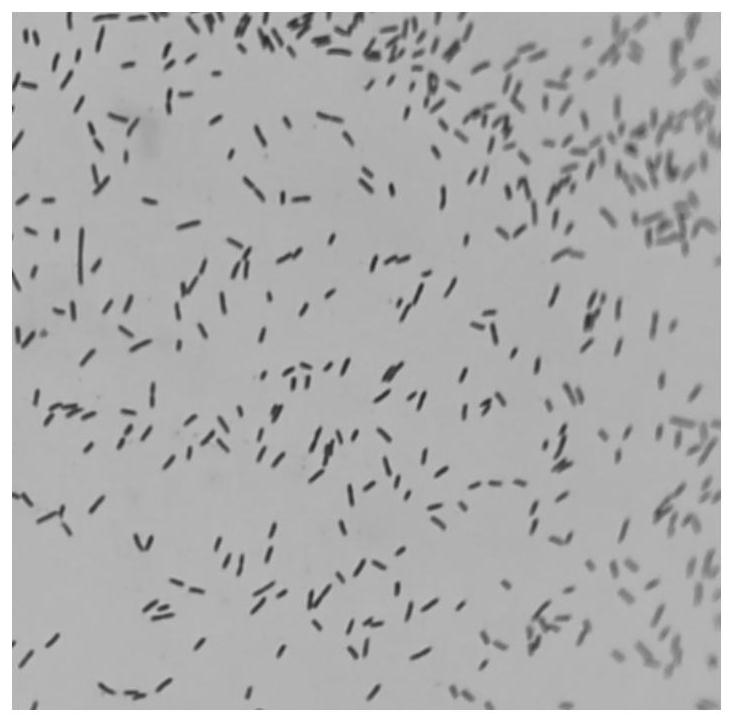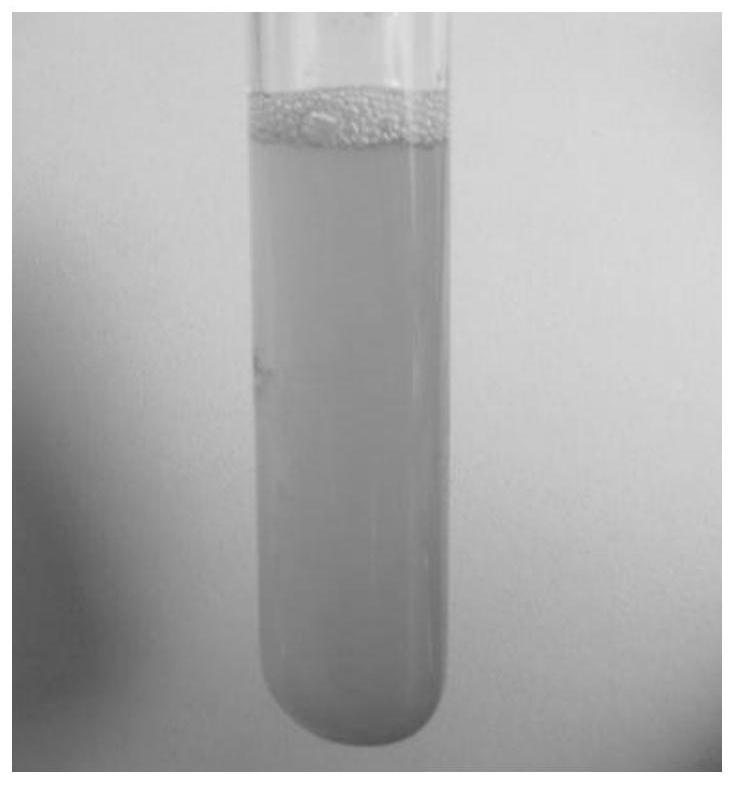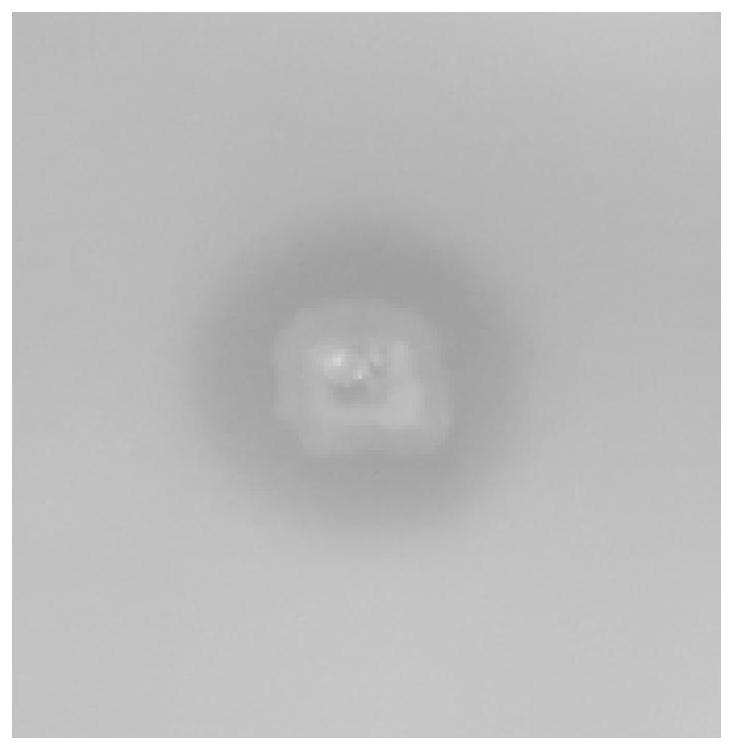Saline-alkaline tolerant argentina pseudomonas strain as well as viable bacteria preparation and application thereof
A technology of pseudomonas and live bacteria preparations, applied in the field of agricultural biology, can solve problems such as limited control effects, achieve the effects of reducing disease occurrence, strong inhibition, and improving yield and quality
- Summary
- Abstract
- Description
- Claims
- Application Information
AI Technical Summary
Problems solved by technology
Method used
Image
Examples
Embodiment 1
[0022] Example 1: Screening of Pseudomonas argentinosus PAPM-9
[0023] (1) Screening of saline-alkali-tolerant strains
[0024] Pseudomonas argentinae PAPM-9 was isolated from tomato rhizosphere soil in June 2018. The soil was sampled in Bincheng District, Binzhou City, Shandong Province, which is moderate saline-alkali soil. The specific separation method is as follows: mix the soil sample evenly, weigh 5g, put it into a conical flask filled with 95mL sterile water and 10 glass beads, shake it at 37°C and 180rpm for 30min. Take 1 mL of soil suspension for 10 -1 —10 -7 gradient dilution, and then take 10 -5 、10 -6 、10 -7 The three dilutions were spread on the plate containing the selection medium, and cultured upside down at 37°C for 2 days. Then pick a single colony and streak it on the plate containing the selection medium, and culture it upside down at 37°C for 2 days. Then pick a single colony and transfer it to the slant of the preservation medium test tube, cult...
Embodiment 2
[0028] Example 2 Identification of Pseudomonas argentinosus PAPM-9
[0029] (1) Morphological and physiological and biochemical characteristics
[0030] The morphological characteristics of the PAPM-9 strain are: cultivated on NA medium at 37°C for 48 hours, the diameter of the colony is about 0.5-0.8mm, yellow and translucent, round, smooth, raised, moist, viscous, shiny, The texture is uniform and the edges are neat; the bacteria are short rod-shaped, such as figure 1 shown. The NA medium is nutrient agar medium, and its formula is 3g of beef extract, 10g of peptone, 5g of NaCl, 20g of agar, 1000mL of water, and pH 7.0.
[0031] The physiological and biochemical characteristics of the PAPM-9 bacterial strain are: Gram-negative rod-shaped bacteria; catalase test positive, urease test positive, citrate utilization test positive, malonate utilization test positive, nitrate reduction test Positive, negative starch hydrolysis test, negative V-P test, positive nitrate reduction...
Embodiment 3
[0035] Example 3 Verification of the functional properties of Pseudomonas argentina PAPM-9
[0036] (1) NH production of Pseudomonas argentinosus PAPM-9 strain 3 ability
[0037] Prepare peptone water medium, the formula of which is: peptone, 10.0 g; NaCl, 5.0 g; distilled water, 1000 mL; sterilized at 121°C for 20 min, pH=7.0. Prepare Nessler's reagent, its formula is: HgI 50.0g, KI 40.0g, dissolve in 200mL ammonia-free water; Pour this solution into 700mL NaOH solution (210g / L), dilute to 1000mL, stand still, take supernatant use.
[0038] Inoculate Pseudomonas argentinosus PAPM-9 strain into a test tube containing 10 mL of peptone water (10 g / L) with an inoculation loop, incubate at 28°C±2°C for 48-72 hours, add 0.5 mL of Nessler's reagent to each tube, and produce yellow or brown Precipitation indicates the presence of NH 3 produce. The culture solution of PAPM-9 strain produced a yellow precipitate after adding Nessler's reagent, indicating that it has the ability to...
PUM
| Property | Measurement | Unit |
|---|---|---|
| diameter | aaaaa | aaaaa |
| diameter | aaaaa | aaaaa |
Abstract
Description
Claims
Application Information
 Login to View More
Login to View More - R&D
- Intellectual Property
- Life Sciences
- Materials
- Tech Scout
- Unparalleled Data Quality
- Higher Quality Content
- 60% Fewer Hallucinations
Browse by: Latest US Patents, China's latest patents, Technical Efficacy Thesaurus, Application Domain, Technology Topic, Popular Technical Reports.
© 2025 PatSnap. All rights reserved.Legal|Privacy policy|Modern Slavery Act Transparency Statement|Sitemap|About US| Contact US: help@patsnap.com



